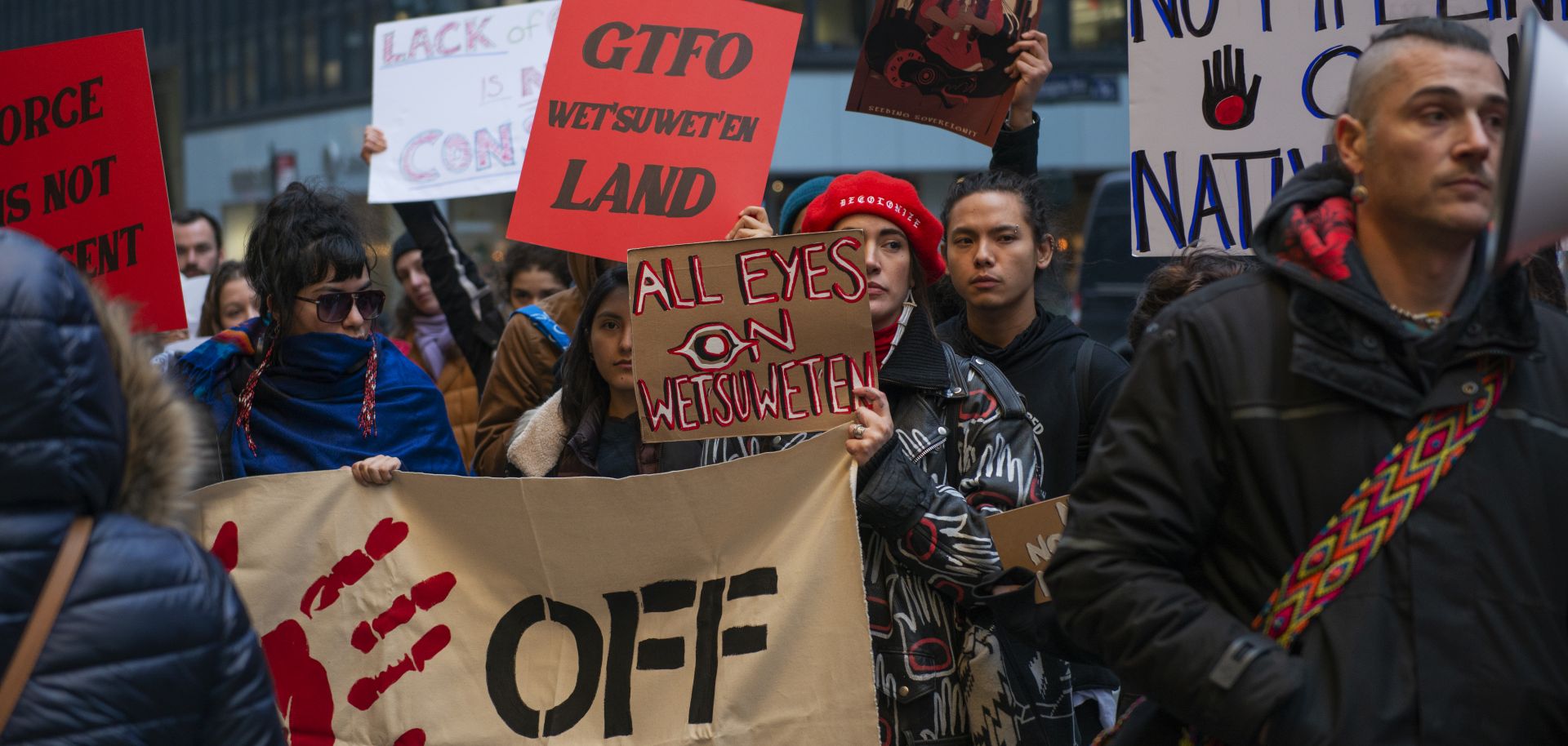ASSESSMENTS
What Comes Next for Canada's Anti-Pipeline Protests?

Feb 26, 2020 | 15:57 GMT

A demonstration in solidarity with the Wet'suwet'en pipeline protest on Feb. 18, 2020, outside the Canadian Consulate in New York.
(Aidan Loughran/NurPhoto via Getty Images)
Highlights
- Protest actions blockading Canada's rail network are small, nimble and having a disproportionate impact on supply chains.
- Canada can expect continued disruptions to train services, and the anti-pipeline protesters' tactics could spread to the United States.
- Protesters could easily expand the scope of their demonstrations, targeting energy companies and their financial backers.
Subscribe Now
SubscribeAlready have an account?
